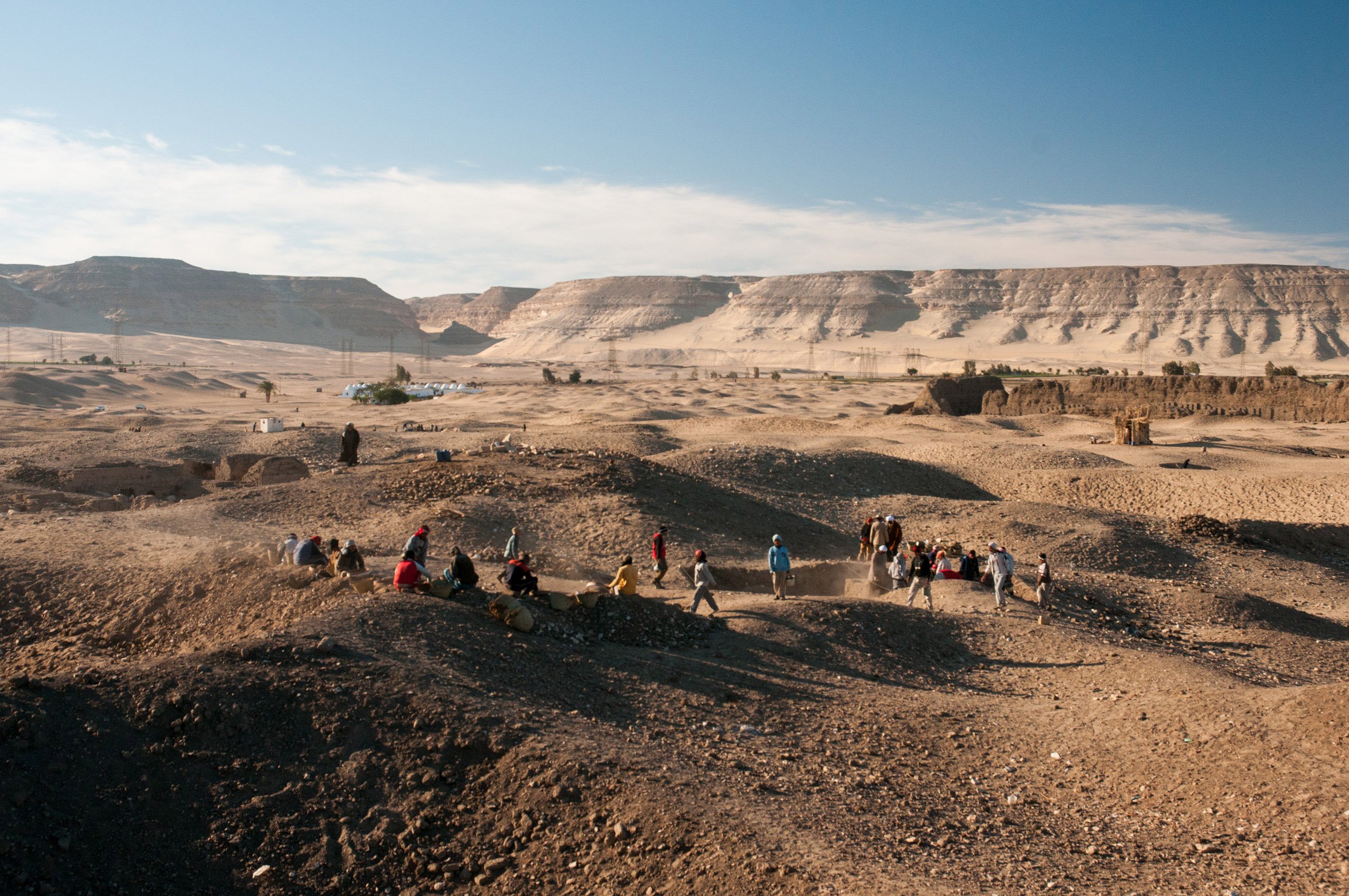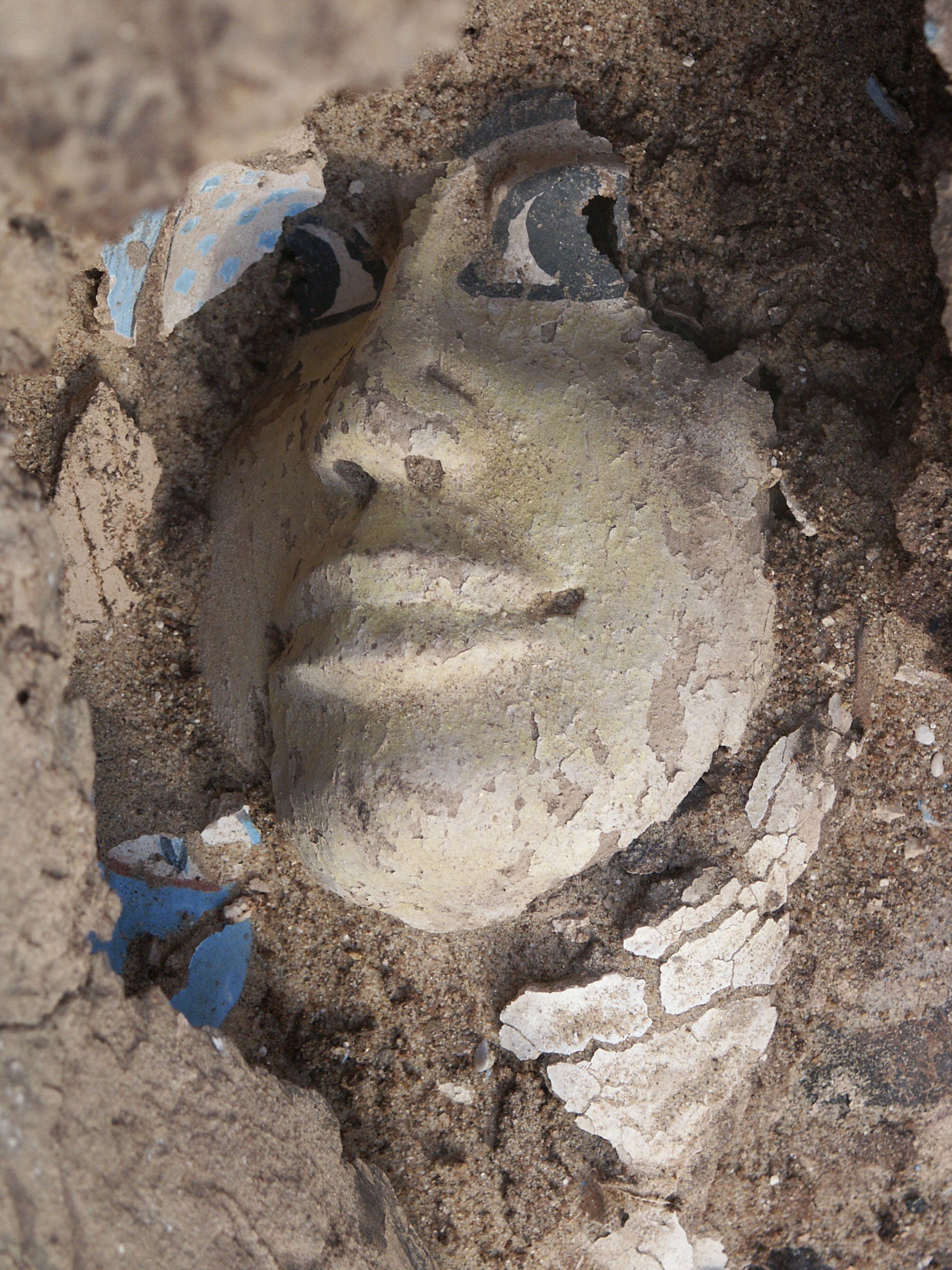


Abydos North Cemetery Excavations
• Covers a 50-hectare (50,000 sq. m.) area of the primary necropolis of ancient Abydos
• Originally defined as sacred royal space by the funerary temples and subsidiary tombs of the kings of Dynasties 1 and 2
• Designated the “Terrace of the Great God,” beginning in the Middle Kingdom—a sacred cemetery associated with the cult of Osiris
• In continuous use as a private cemetery from the early Middle Kingdom to the end of the Ptolemaic Period, when it was transformed into a sacred landscape of early Christianity
• Long history of archaeological investigation, 1859 to present—major recent discoveries include a buried fleet of First Dynasty boat graves in 1991, and the funerary complex of King Aha in 2001
Photo (1) , Abydos Archaeology © 2003, (2) , Abydos Archaeology © 2019
